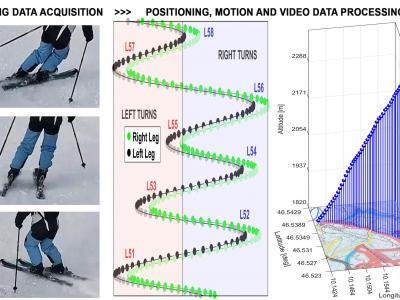Artificial Intelligence

Bananas are widely farmed and consumed, offering essential nutrients like manganese, vitamin B6, vitamin C, and magnesium. They come in various breeds with distinct visual traits, including size, shape, color, texture, and skin patterns. To classify these varieties, five deep learning models—VGG16, ResNet50, MobileNet, Inception-v3, and a customized CNN—were trained on banana images. These models enhance quality control and supply chain management by accurately identifying banana breeds.
- Categories:
 195 Views
195 ViewsThe integration of wearable sensors with artificial intelligence forms the base for analyzing physical activities through digital signal processing, numerical methods, and machine learning. Computational intelligence and communication technologies enable personalized monitoring, training, and rehabilitation, with applications in sports, neurology, and biomedicine. This paper focuses on motion analysis in alpine skiing using real accelerometric, gyroscopic, positioning, and video data to evaluate ski movement patterns.
- Categories:
 175 Views
175 Views
We construct the Thyroid Nodule Ultrasound (TNUS) dataset with thyroid nodule positions and puncture annotations, lacking in existing datasets. It supports future research in automating detection and diagnosis, enhancing diagnostic accuracy and clinical applications. The TNUS dataset is a curated collection of thyroid nodule ultrasound (US) images designed to support research in puncture position detection and nodule segmentation. It contains 4,376 images with puncture position annotations and 2,626 additional images with thyroid/nodule masks.
- Categories:
 193 Views
193 ViewsÛThis article examines Meta-AI's sociolinguistic challenges on WhatsApp through research-based analysis of its limitations in adapting lexicon and precise ethical practices in intercultural communication. The study demonstrates how Meta-AI system fails to read truncated vernacular speech patterns (“kenapa” → “enapa”) while missing customized slang (“puki”) used specifically in Maluku, North Maluku and East Nusa Tenggara regions to show fundamental limitations in error recognition capabilities and contextual understanding.
- Categories:
 113 Views
113 Views
The BNS (Bharatiya Nyay Sanhita) dataset is a comprehensive collection of legal texts which was web-scraped.. It consists of chapters and their respective sections, capturing detailed legal content relevant to the recently introduced BNS framework in India. This dataset was gathered using a Python-based web scraping script leveraging Selenium WebDriver, ensuring accuracy and completeness. Available in CSV formats, the dataset facilitates ease of access for legal research, natural language processing (NLP) tasks, and AI-based legal assistance applications.
- Categories:
 184 Views
184 Views
This is the patent data we collected from USTPO. Its part of the paper that we used for our study. It contains patent data regarding financial, assistive, and artificial intelligence technology convergence. These patents are all registered in USPTO (united states patent and trademark office) from 2001 to 2020. These data were used for network analysis. Further details will be uploaded after paper acception.
- Categories:
 10 Views
10 Views
Dataset was created for the purposes of exploring time distortion with non-ideal near-field conditions. A 90 Hz square wave is played at 100dBA through a bookshelf speaker with the port removed. The recordings were captured at 5 separate axial distances (From 2" to 17", following inverse square law), and at three levels of resistive loading (No added resistance, 1.5 ohm, 3 ohm). The DC resistance of the speaker was measured at 6.9 ohms. To avoid overtraining, captures were recorded on a moving dynamic microphone.
- Categories:
 13 Views
13 Views
Integrating multiple (sub-)systems is essential to create advanced Information Systems. Difficulties mainly arise when integrating dynamic environments, e.g., the integration at design time of not yet existing services. This has been traditionally addressed using a registry that provides the API documentation of the endpoints.
- Categories:
 22 Views
22 Views
Gramatika is a syntectic GEC dataset for Indonesian. The Gramatika dataset has a total of 1.5 million sentences with 4,666,185 errors. Of all sentences, only 30,000 (2%) are correct sentences with no mistakes. Each sentence has a maximum of 6 errors, and there can only be 2 of the same error type in each sentence.We also split the dataset into three splits: train, dev, and test splits, with the proportion of 8:1:1 (with the size of 1,199,705, 150,171, and 150,124 sentences, respectively).
- Categories:
 20 Views
20 Views
Gramatika is a syntectic GEC dataset for Indonesian. The Gramatika dataset has a total of 1.5 million sentences with 4,666,185 errors. Of all sentences, only 30,000 (2%) are correct sentences with no mistakes. Each sentence has a maximum of 6 errors, and there can only be 2 of the same error type in each sentence.We also split the dataset into three splits: train, dev, and test splits, with the proportion of 8:1:1 (with the size of 1,199,705, 150,171, and 150,124 sentences, respectively).
- Categories:
 5 Views
5 Views
